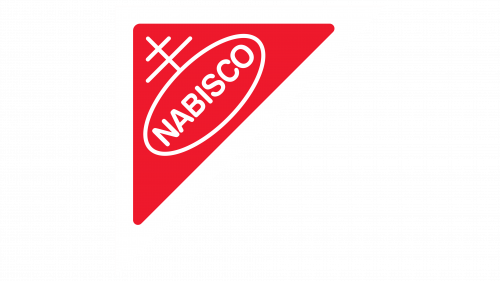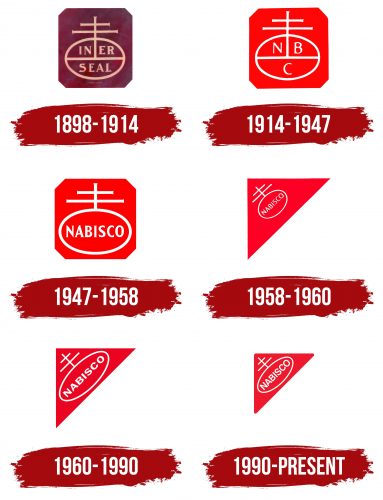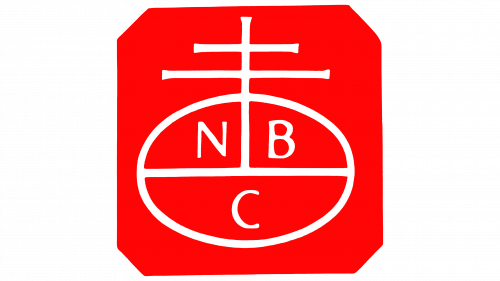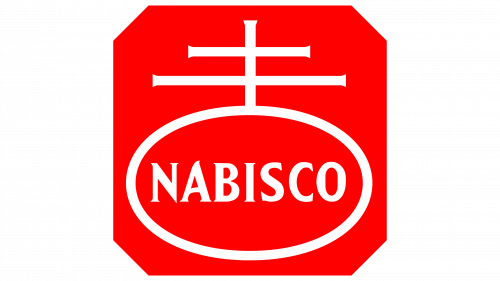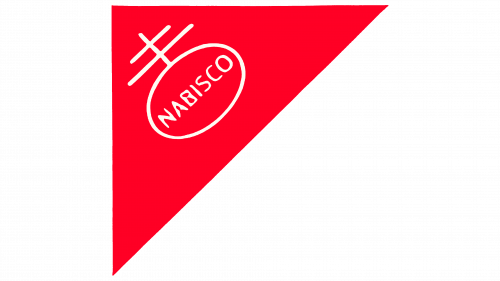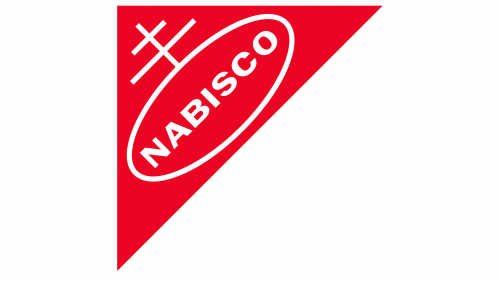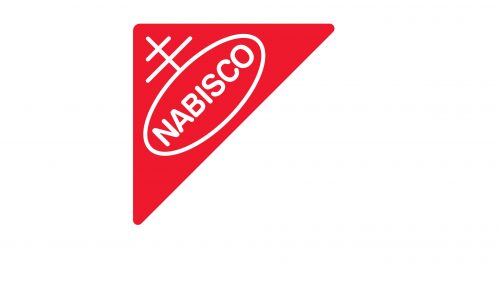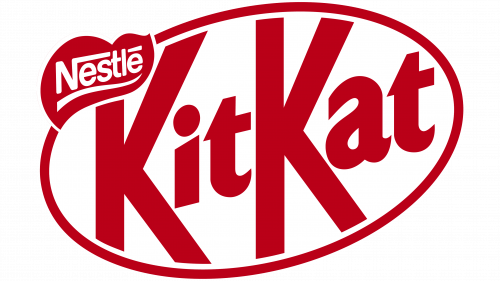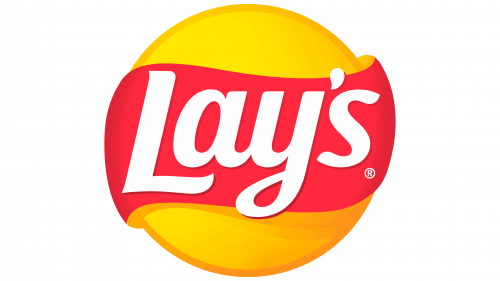The Nabisco logo inspires trust among customers because it is familiar to all sweet pastries and snacks fans. It is instantly recognizable, so snack packages featuring this emblem are the first to disappear from store shelves. After all, the most delicious products are hidden under this logo.
Nabisco: Brand overview
The American Biscuit & Manufacturing Company and the New York Biscuit Company, two of the country’s largest bakers, combined to form Nabisco in 1898. The National Biscuit Company, eventually abbreviated as Nabisco, was the name given to the new business.
Adolphus Green was the creator of the company and its first chairman of the board. He oversaw the rapid expansion through the acquisition of smaller bakeries and the diversification of its product line.
The enterprise debuted its well-known product, the Uneeda Biscuit, in 1901. The product’s shelf life was greatly extended since it was the first biscuit packaged in a sealed container. The Uneeda Biscuit transformed the market and quickly became a customer favorite.
Another iconic product, the Oreo cookie, was first introduced in 1912. This sandwich cookie quickly rose to the top of the global cookie popularity charts, and it still does.
The brand began to broaden its product offering in the 1920s and 1930s, launching products including Ritz Crackers in 1934 and Premium Saltines in 1927. These goods continued to be produced and were highly successful.
Like many other businesses, the manufacturer modified its production to aid the war effort during World War II. The business made customized K-rations for US military personnel.
Although the corporation had been using the acronym informally for some time, it was legally changed to the new name in 1941.
The producer experienced notable expansion during the 1950s and 1960s. The corporation increased its market share abroad by establishing plants in Europe and Latin America.
In 1981, the company and Standard Brands combined to become Nabisco Brands, Inc. This acquisition greatly increased the portfolio by adding brands, including Planters Nuts and Baby Ruth.
A significant turning point in the company’s history occurred in 1985. R.J. Reynolds Industries became RJR Nabisco after paying $4.9 billion to buy Nabisco Brands.
One thousand nine hundred eighty-eight, one of America’s most well-known corporate takeovers, involved RJR Nabisco. Following an intense struggle, Kohlberg Kravis Roberts & Co., an investment firm, paid $25 billion to acquire the corporation.
The company persevered throughout the 1990s despite financial setbacks from the acquisition debt. The business kept launching new goods and expanding its global footprint.
After RJR Nabisco’s tobacco division was split off in 2000, Phillip Morris Companies—later known as Altria Group—purchased Nabisco for $14.9 billion.
Kraft Foods, which owned the brand then, was divided into two businesses in 2012. The brand joined Mondelez International, a company concentrating on the international snack market.
In 2013, Mondelez International invested significantly in modernizing its manufacturing plants. This involved improving machinery and streamlining industrial procedures to increase productivity.
In 2014, new iterations of the beloved Oreo cookie, including limited editions with unique flavors, were introduced. This tactic helped capture customers’ interest and revitalize the brand.
In 2015, the producer introduced new Oreo products and launched a global marketing effort to celebrate the brand’s 115th anniversary.
The company’s entry into the healthy snack sector was announced in 2016. Responding to the increased demand for healthy snacks, it launched a new line of cookies and crackers with lower sugar and fat content.
In 2017, Oreo Thins—a more adult-oriented variation of the beloved cookie—was introduced as part of its ongoing product line innovation.
In 2018, several fruitful partnerships began. The company collaborated with well-known brands and media properties to attract new customers and produce limited-edition goods.
The corporation increased its use of social media to interact with customers and launched interactive web marketing in 2019 to bolster its online presence.
2020 presented new difficulties because of worldwide shifts in consumer behavior. The producer adjusted by prioritizing product delivery and online sales.
In 2021, the brand introduced new eco-friendly packaging alternatives for a few of its goods as part of its ongoing packaging advancements.
In 2022, the producer increased its global footprint, concentrating especially on developing nations.
As part of Mondelez International, the manufacturer continued to be one of the world’s top producers of cookies and snacks by continuously adjusting to shifting consumer preferences and technological advancements.
The brand has maintained its position as one of the world’s leading manufacturers of cookies and crackers by consistently adapting to shifting consumer preferences and market dynamics.
Meaning and History
What is Nabisco?
A major American snack company that has been meeting people’s needs for sweet and savory products for many years. Some of the most well-known snacks are produced by this esteemed company, such as Oreo cookies, Ritz crackers, and Chips Ahoy! From wholesome Triscuit wheat crackers to decadent Nutter Butter peanut butter cookies, some of its products have reached iconic popularity, leading to countless flavor variations and limited editions, influencing American snack culture. It uses recipes that have been around for decades to produce billions of cookies and crackers each year in its factories.
1898 – 1914
The visual identity of this beloved American brand is based on two foundations: confectionery and religion. Both are visible in the Nabisco logo. How are these two different directions connected? It turns out, morally and ethically.
The main element of the identity originates from a symbol that once represented the world’s redemption by Jesus Christ. These are crossed thin lines, resembling a double cross. They represent a Venetian printing symbol from the Medieval era, signifying the triumph of spiritual and moral values over material and evil. It is a so-called orb—a royal regalia in the form of a spherical object with a cross on top, symbolizing dominion. Later, under the influence of designers, it evolved into an everyday element.
The horizontal ellipse features several lines resembling an antenna. They rise upwards and intersect at two points, forming an impressive symbol that, in its original form, appears on all packages with branded products. A longitudinal stroke serves as the starting point for the vertical line, which divides the oval into equal halves with inscriptions placed on two levels:
- The top line reads “IN-ER.”
- The bottom row is labeled “SEAL.”
This was the former name of the Nabisco company. The octagonal shape of the emblem (a square with cut corners) was inherited from the trademark of its flagship product—Uneeda biscuits. It serves as a reminder of the airtight packaging used for storing crackers. Both the inscriptions and the upward lines have short serifs. These appear as sharp, miniature extensions at the ends, adding uniqueness to the logo.
The text is in uppercase font. The glyphs feature lines of uneven width, narrowing in some places and widening in others. However, all the letters are bold overall. They are painted peach, standing out clearly against the dark maroon background. Both colors embody positivity, creating a favorable atmosphere and giving customers a sense of anticipation for wholesome snacks, perfect for a quick bite in any setting.
1914 – 1947
After receiving a new name, the cookie and snack company slightly redesigned its logo. The first step was to incorporate its name into the logo and make it fit perfectly within the limited space; they shortened it. Since then, the brand has been officially called Nabisco, a shortened form derived from the phrase “National Biscuit Company.”
Designers chose the most compact option to minimize the text: an abbreviation. As a result, the logo featured three separate letters: “N,” “B,” and “C.” Each letter occupied an individual space, making them completely independent of each other:
- The left section displays the “N.”
- Directly opposite, on the right, is the “B.”
- In the lower half of the oval is the “C.”
They possess not only a dividing factor but also a unifying one. All glyphs are painted white, positioned in uppercase, and enhanced with barely noticeable serifs that lend them a sense of formality. The letters are large and bold and command respect for the brand. They are crafted in a classic style, with a perfect balance of angles and curves, making them visible and leaving a trustworthy impression.
The other elements are also white: the oval, the internal horizontal line, and the cross with two upper bars. All lines share the same thickness to maintain a unified style—calm, gentle, and balanced. However, the logo does not hint at the sweetness or snack hidden behind the trademark. Instead, it is distinctive and deeply rooted in the company’s history.
The octagon is made of red (almost scarlet), which contrasts well with white. It fills the entire square space with clipped right angles, creating a vivid background for the other elements. In cookie and snack production, this shade reflects the brand’s confidence in its product and aspiration to be a leader in its field.
1947 – 1958
The confectionery company used the full name by abandoning the abbreviation in the logo, leading to another redesign. However, the intervention was minimal: it did not alter the concept of the emblem, its structure, color, or even its elements. A strong connection to its origins restricted significant changes, resulting in a single innovation—the word “Nabisco.” This word is derived from the old name:
- Na – National;
- Bis – Biscuit;
- Co – Company.
The double cross still rises above all other elements, symbolizing a Venetian printer’s mark or a royal symbol. It conveys trust in the product, emphasizes its high quality, and hints at the manufacturer’s leadership. These three factors are combined in a concise emblem that leaves a positive impression. The visual identity contains no playful elements to show that the brand’s products are for children and adults.
To fit the new name entirely within the ellipse, designers removed the dividing line and placed the text directly in the center, equidistant from the edges. Additionally, they stretched the oval horizontally, slightly elongating it. The typographers left the font style untouched: the letters remain bold, uppercase, and even. They still have the miniature sharpened serifs, which appear as extensions at the ends.
The neat and vivid Nabisco logo reflects the professionalism of the confectionery company, its strict adherence to food standards, and its desire to stay ahead of competitors. It showcases an identity that combines moral and ethical principles with high-tech production standards.
1958 – 1960
The era of a simple geometric shape has begun—a side isosceles triangle. It held a dominant position in the confectionery company’s visual identity for a long time and started to dictate its concept. More precisely, it adjusted the concept, guiding it in the right direction.
- First, the emblem gained compactness, which it previously lacked, making it suitable for placement on packaging of various shapes and sizes.
- Second, the snack producer standardized its products by placing its mark on all product categories.
- Third, this logo positioning had not been seen before, making it more original and easily recognizable.
This brought the brand widespread popularity, as the triangle, standing on its pointed corner, was easily associated with crackers, sandwiches, and cookies—especially since the company had long been producing shaped products, including triangular ones. The side positioning also removed the emphasized religiosity from the Nabisco emblem; this undertone became secondary. As a result, the logo gained thematic relevance, aligning closer to the professional field of the confectionery business.
Thus, a simple geometric shape changed everything. It acquired significant status, becoming a symbol of high-quality products. The ellipse and double cross also shifted their positions. They now occupy a diagonal position, pointing upward to the right, resembling a round satellite dish. In this way, the brand emphasized its readiness to capture signals from consumers, indicating its intent to be even more attentive to their feedback. The intersecting lines lost their sharp extensions at the ends and became standard bold lines.
The text’s position also changed, now appearing diagonally. The line going upward suggests company growth and an optimistic outlook. It hints at active development, leadership, success, and a positive future. The serifs on the letters remained, adding seriousness to the emblem and establishing it as the official trademark of Nabisco for a long time. The color combination also stayed the same: white on a bright red background.
1960 – 1990
In this case, the cookie and snack manufacturer decided to compactly arrange elements on the triangular emblem because they didn’t scale well and became barely noticeable when reduced. This led to several significant changes.
- One of the changes involved the color palette. The bright scarlet was replaced with dark red, which added restraint and professionalism to the Nabisco logo. It emphasized the company’s seriousness, highlighted its priorities, and made the name stand out.
- The second modification was related to the font. Designers removed the extensions at the ends of the letters but kept the original stroke width. The strict glyphs became more rounded and flattened, making them easily recognizable.
- The third adjustment concerned the ellipse. The creators elongated it to ensure the name fit entirely while maintaining optimal readability. Now, the oval stretches from one narrow corner to the other.
The changes benefited the bakery business: it gained a modern trademark with balanced and harmonious elements. Even the religious and moral theme no longer stands out, as the intersecting lines without extensions at the ends no longer resemble a cross on the top of a dome—they look more like locators or antennas.
The font in the inscription became bold, with a barely noticeable taper at the bends. This gave the Nabisco emblem a specific touch without drastic intervention. Yet the changes were still noticeable because the size of the uppercase letters increased, drawing attention. Additionally, the intersecting lines are now elevated. They almost touch the only right angle in the triangle—on the left side.
1990 – today
After another update, the Nabisco logo appeared in a modern style. It was refined without drastic changes to the concept and structure. In other words, the symbol remained mostly the same with minimal differences that significantly downplayed the moral and ethical themes, bringing delicious snack food to the forefront.
The most crucial change involved the font, which became simpler, lighter, and softer. These three elements manifested in the rounded ends of the improvised antenna. The intersecting lines now resemble a double cross to the smallest degree, lacking any sharp protrusions or extensions.
The next significant change affected the lettering. Now, the font used has the same thickness as the upward-extending lines. Additionally, the letters have been softened, thanks largely to rounded ends on each glyph. There are no sharply cut strokes here. This was done to minimize negativity and present the snack and cookie manufacturer as a customer-oriented company that cares about its consumers by offering safe and beneficial products.
Rounded edges even appeared on the red-colored background triangle. Speaking of which, the color palette was another aspect that underwent an update. In this version of the Nabisco logo, a softer, pastel shade of red is used—gentle, muted, and not too bright. It reflects attention to customers, product benefits, operational stability, and the joy of achievements. The brand has no doubts about its leadership—it presents it as a fact achieved through its efforts.
The pleasant red embodies everything the company prides itself on high technology, warmth, enjoyment, and confidence. It forms a perfect tandem with white—the color of purity, sincerity, and openness. This refined combination symbolizes professionalism, passion, and impeccable product quality. Furthermore, the white lettering on the red background remains highly legible, even with minimal spacing between the letters.
